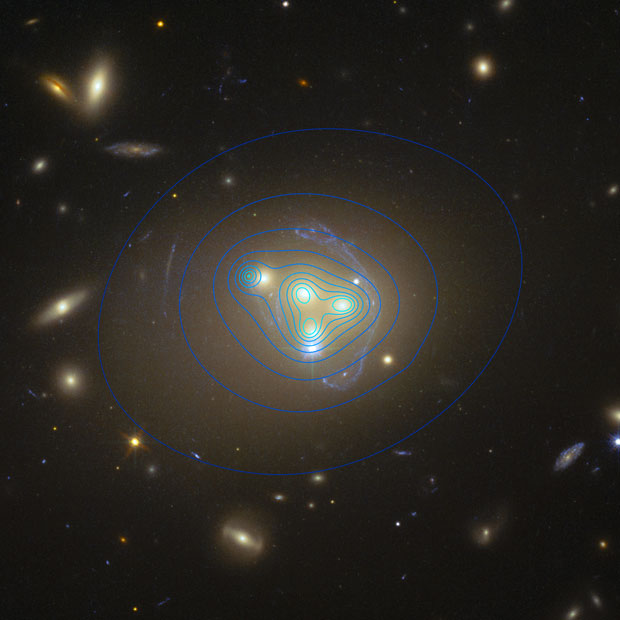
For years, dark matter seemed to do nothing. It had mass and therefore could influence space gravitationally, but there was no evidence of it interacting with anything else in the Universe in any other way, which made it incredibly frustrating to study. Then, in 2015, a breakthrough occurred: for the first time a clump of dark matter was seen to interact, however tenderly, with another clump of dark matter. This was big news.
Why? Although we still do not know what dark matter is, if scientists can measure its interactions, however weak, they can start to narrow down the possibilities of what dark matter could be. Astronomers led by Richard Massey of the University of Durham observed a four-way galaxy collision at the core of the Abell 3827 galaxy cluster, which is located 1.3 billion light years away. Massey’s team were able to measure the locations of clumps of dark matter around each of the galaxies, by way of gravitational lensing – how the gravity of the dark matter bends light. They found that at least one of the clumps was offset from its galaxy by about 5,000 light years, caused by the clump interacting with the larger dark matter halo present within the cluster. It is only a relatively tiny interaction, but it pours cold water on the theory of ‘cold’ dark matter, which posits that dark matter particles should not interact at all. Instead, other theories of dark matter predict that a force can exist between particles of dark matter, and this may very well be the first measurement of that force.
Inside the magazine
Our top ten greatest stories of 2015 first appeared in the December edition of Astronomy Now.
Never miss an issue by subscribing to the UK’s biggest and best astronomy magazine. Also available for iPad/iPhone and Android devices.




